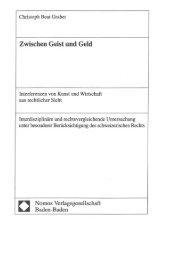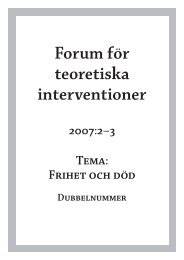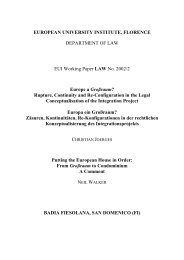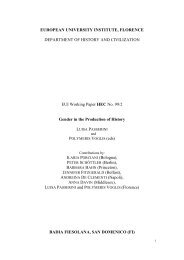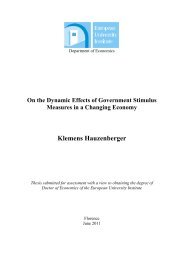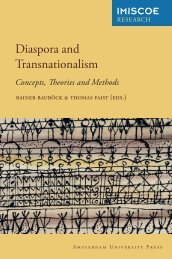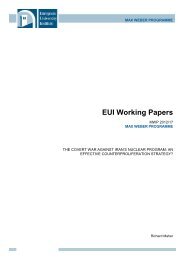Sinziana-Elena Poiana Ioana Lupea Irina-Madalina Doroftei Alina ...
Sinziana-Elena Poiana Ioana Lupea Irina-Madalina Doroftei Alina ...
Sinziana-Elena Poiana Ioana Lupea Irina-Madalina Doroftei Alina ...
Create successful ePaper yourself
Turn your PDF publications into a flip-book with our unique Google optimized e-Paper software.
Amplified by the political entrepreneurs, this leads to an environment of intolerance and distrust<br />
manifested on every occasion.<br />
Salat considers that Hungarians failed to self-revise their status within the Romanian State, to find the<br />
alternative forms of "self-assertion" that would have been more appropriate to the minority's current<br />
situation. The self-pity for the loss of majority status after the separation of Transylvania from<br />
Hungary due to the 1920 Treaty of Trianon, the self victimization as a people who suffered throughout<br />
history, "the attempts of institutionalized "separateness" within the state" (Salat, 2006), the misuse of<br />
the dominant position in regions where Hungarians are in majority by excluding Romanians from the<br />
decision-making process at the local level, these are all evidence supporting the argument. The<br />
Hungarian political elite, supported by Budapest, makes use of ethno-symbolism and keeps alive the<br />
traumatic memory of Trianon, the cancellation of the Hungarian Autonomous Region, and the fear of<br />
assimilation. The rhetorical exercises of certain Hungarian politicians, from within and outside<br />
Romania, multiplied by the Hungarian media, contribute to the consolidation of ethnic identity, as<br />
means of protection against a potentially aggressor state, to the detriment of the civic identity.<br />
Although the Romanian state and the majority had a bigger responsibility, the minority nationalism,<br />
whose extremist exponent is Csibi Barna as well, contributes to the creation of a vicious circle in terms<br />
of identity fears and mutual incriminations. The young Hungarian Csibi Barna, as well as the young<br />
Romanians who profaned the statue of Gabor Aron, did not come from out of nowhere, their hard<br />
feelings were fed by media and the politicians. The recognition of the multiethnic character of the<br />
Romanian state was dismissed by the Romanian political elite and by the Romanian majority.<br />
Constitutionally, Romania is a nation-state, and this nature cannot be changed by revision, the 1991<br />
Constitution states. The constitutional text is considered by Hungarians as an "exclusion agent" (Salat,<br />
2006).<br />
The majority, through the Romanian media, political representatives and state institutions show<br />
intolerance towards what it considers to be the lack of loyalty toward the Romanian state with its<br />
national symbols, The National Day and Anthem, the national heroes. Csibi Barna's case showed the<br />
capacity of the Romanian political elite to cynically instrument the identity competition of the two<br />
communities for electoral purposes. The arbitrary decisions of the Tax Authority’s president, a proeminent<br />
member of the ruling party, were investigated for discrimination and they were about to<br />
generate an actual inter-ethnic conflict by transferring Csibi Barna to Abrud, a city historically<br />
connected to the life of Avram Iancu. The objectivity of the public institutions, reacting differently in<br />
similar cases, such as the hanging of Avram Iancu’s doll and the profanation of the monument<br />
representing Gabor Aron, is also questionable.<br />
The Hungarians’ claims for collective rights, including cultural autonomy and autonomy for Szekler<br />
Land, expressed in the language of the historical contest between two nations, and not in the rational<br />
language of the benefits of the self-administration of one’s own ethnic group (Culic, 2001), revive the<br />
memories of the majority and their fears of Hungarians domination, as it was cultivated by the<br />
political elite. The autonomy issue can be construed as a "societal security dilemma" as Paul Roe<br />
described. Autonomy viewed by the Hungarian elite as an instrument meant to preserve the<br />
community’s identity and security, or, in its rhetoric use, a piece of discourse meant to mobilize the<br />
ethnical electorate, is perceived by the majority as a threat to national identity, to the state’s<br />
sovereignty and unity.<br />
In conclusion…<br />
The last two decades were characterized by a continuous development of human rights infrastructure<br />
and import of EU institutions of tolerance. As the first case study from chapter 2 shows (the Roma<br />
case study) these institutions work: rights are enforced in practice when active citizens demand them,<br />
Courts apply the law without discrimination and problems stem rather from the extreme politicization<br />
of each and every situation. However, as it is shown in the first two chapters, such positive<br />
80



